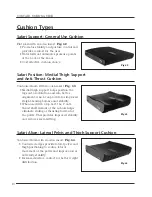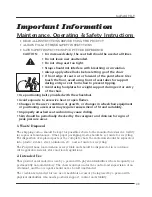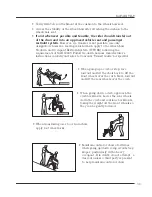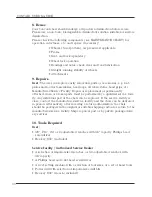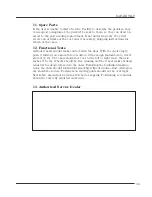
20
SENSIFORM SEAT CUSHIONS
The fitting of the cushion should be done by an experienced clinician. When fitted cor-
rectly, the cushion will help provide stable support and promote good posture. Consult the
clinician for questions regarding individual needs.
While in the seated position, select the cushion size to match the user’s hip width. The
cushion length should equal the distance from the back of the buttocks to the back of the
knees (plus 1 inch).
1. Place the cushion to the back of the wheelchair with the material identification
tags towards the rear. Position the hips to the back of the seat. The ischials
(seat bones) should be centered on the seat well of the cushion.
2. Align the Velcro strips with those on the wheelchair seat. Secure the cushion
in place.
3. Adjust the wheelchair footrest height so that the user's legs rest firmly but
comfortably on the cushion. Proper footrest adjustment will enhance sitting
comfort and help lower peak sitting pressures.
Installing a cushion on a wheelchair may affect the center of gravity and cause the wheel-
chair to become unstable, potentially resulting in injury. Prior to use, assess the stability of
the wheelchair by sitting in it with the cushion attached.
Ensure the cushion's Velcro is in good condition and is aligned properly with the Velcro on
the wheelchair seat. Make sure the cushion is firmly attached. An improperly attached
cushion may cause sliding, potentially resulting in injury.
Changes in the user’s condition or growth, or changes in wheelchair equipment or acces-
sories may require reassessment by a clinician to ensure proper cushion fit and suitability.
Skin should be constantly checked by the user's caregiver for any signs of reddened areas
or skin sensitivity. These areas should be brought to the attention of a clinician. The clini-
cian should also assist the family with assessing the cushion for any possible areas that
have bottomed out.
Caution
Fitting














